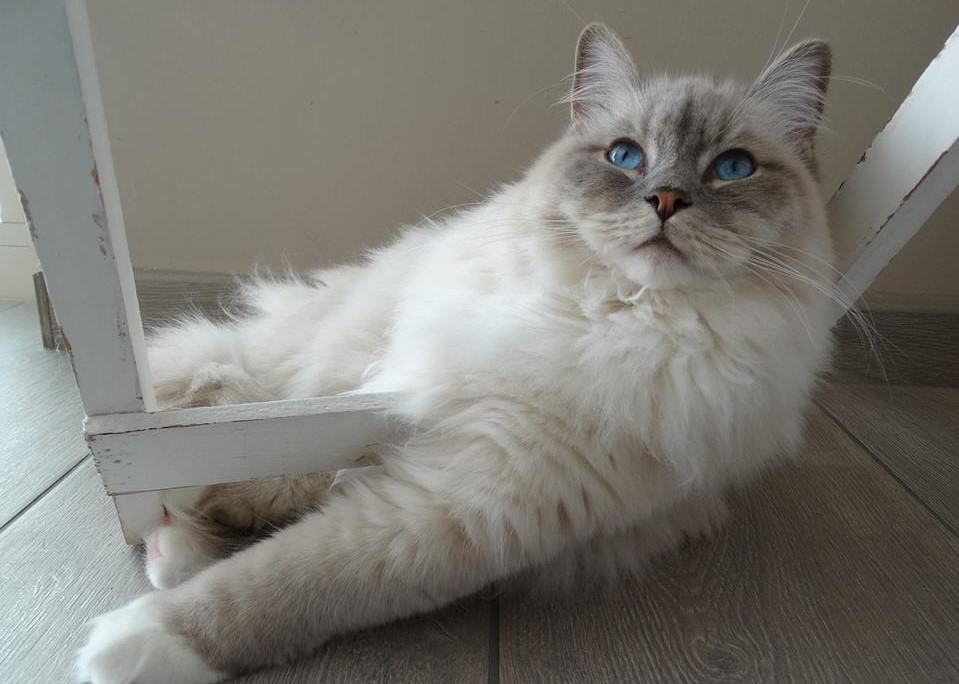Balinese cats, with their striking appearance and elegant demeanor, are a popular choice among cat enthusiasts. These long-haired felines, often mistaken for Siamese cats due to their similar body type, are known for their affectionate nature and captivating blue eyes. However, like all cats, Balinese cats have natural instincts and behaviors that can sometimes cause challenges for their human companions. One such behavior is scratching, which raises the question: Do Balinese cats scratch furniture? In this article, we’ll delve into the reasons behind this behavior and explore strategies to manage and prevent furniture scratching in Balinese cats.
Understanding Scratching Behavior
Scratching is a natural behavior for all cats, including Balinese cats. It serves multiple purposes in their lives, such as:
- Marking Territory: Cats have scent glands in their paws, and scratching leaves both a visual mark (visible scratch marks) and a scent mark, helping them establish their territory.
- Maintaining Claw Health: Scratching helps cats shed the outer layer of their claws, keeping them healthy and functional.
- Stretching and Exercise: Scratching allows cats to stretch their muscles and flex their bodies, promoting physical health and agility.
- Communication: Cats may scratch as a way to communicate with other cats or their human owners.
Given these innate motivations, it’s important to remember that scratching is not a behavior that can be eliminated entirely from a cat’s routine. Instead, the goal is to redirect this behavior toward appropriate outlets.
Do Balinese Cats Scratch Furniture?
“Balinese cats, like any other feline breed, can engage in furniture scratching. Their sharp claws and natural instincts mean they might choose furniture, carpets, or other household items as scratching posts. While the Balinese breed is known for its gentle and sociable nature, scratching is not a behavioral trait that can be bred out. Instead, it’s a part of their inherent nature as cats.”
Managing Furniture Scratching
If you’re a Balinese cat owner concerned about furniture scratching, there are several strategies you can employ to manage and redirect this behavior:
- Provide Scratching Posts: Offering a variety of scratching posts with different textures and materials can give your Balinese cat alternatives to furniture. Sisal, cardboard, and carpeted posts are popular choices.
- Strategic Placement: Position the scratching posts near the furniture your cat tends to target. Cats often scratch in prominent areas, so placing posts nearby can naturally divert their attention.
- Positive Reinforcement: Reward your cat when they use the scratching posts. Positive reinforcement can help them associate the posts with rewards and encourage the desired behavior.
- Use Deterrents: Employ safe and cat-friendly deterrents on furniture, such as double-sided tape or aluminum foil, to discourage scratching. These textures are unappealing to cats and may redirect them to the appropriate scratching posts.
- Regular Nail Trimming: Keeping your Balinese cat’s claws trimmed can reduce the potential damage caused by scratching.
- Interactive Playtime: Engage your cat in interactive play sessions to help them release excess energy, which can reduce the frequency of scratching.
- Scratching Pads and Horizontal Surfaces: Some cats prefer scratching on horizontal surfaces. Providing scratching pads or mats can cater to this preference.
FAQ’s
-
Do Balinese Cats have a tendency to scratch furniture?
- Balinese cats, like many other cat breeds, may exhibit scratching behavior. Providing appropriate scratching posts and regularly trimming their nails can help redirect this behavior away from furniture.
-
How can I prevent my Balinese Cat from scratching my furniture?
- To prevent furniture scratching, offer scratching posts with different textures, and place them strategically around your home. Use cat-friendly deterrents on furniture and provide positive reinforcement when your cat uses designated scratching surfaces.
-
Are Balinese Cats more prone to scratching compared to other breeds?
- Scratching behavior is not specific to Balinese cats and varies among individuals. Proper environmental enrichment, including scratching posts and toys, can help manage this behavior in all cat breeds.
-
What type of scratching posts do Balinese Cats prefer?
- Balinese cats may have preferences for scratching posts with various textures such as sisal, cardboard, or carpet. Experiment with different options to discover what your cat likes best.
-
At what age do Balinese Kittens start scratching furniture?
- Kittens, including Balinese kittens, may start exploring scratching behavior as early as 8 weeks. It’s important to introduce appropriate scratching surfaces early on and provide positive reinforcement to guide their behavior.
-
Is declawing a Balinese Cat a suitable solution to prevent furniture scratching?
- Declawing is considered a painful and controversial procedure. Instead, opt for humane alternatives such as regular nail trimming, using soft nail caps, and providing suitable scratching outlets to manage scratching behavior.
-
Can I train my Balinese Cat to stop scratching furniture if it has already started?
- Yes, you can train your Balinese cat to redirect their scratching behavior. Use positive reinforcement, reward them for using scratching posts, and consider using cat-friendly deterrents on furniture. Consistency and patience are key in modifying their behavior.
Conclusion
Balinese cats, with their stunning looks and charming personalities, are prone to scratching furniture just like any other cat. Understanding the reasons behind this behavior and employing effective management strategies can help you maintain harmony in your home while allowing your Balinese cat to express its natural instincts. By providing appropriate scratching outlets and creating a positive environment, you can enjoy a peaceful coexistence with your feline friend without sacrificing the beauty of your furniture.



